Real name Curtis Newton | Schedule Quarterly Number of issues 17 | |
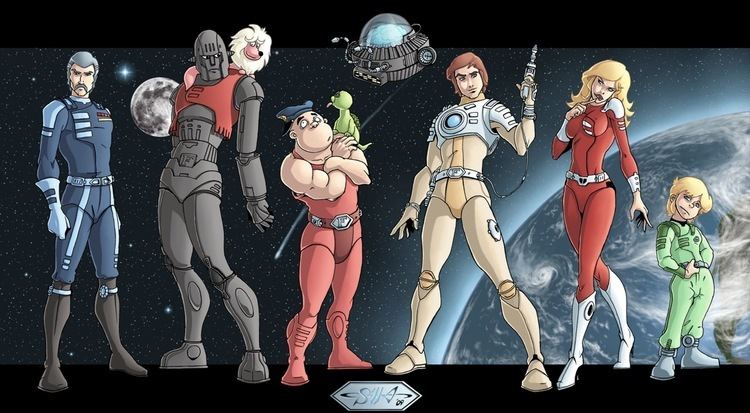 | ||
First appearance Captain Future (Winter 1940) Supporting characters Simon WrightGragOthoProf. Simon WrightJoan RandallMarshall Ezra GurneyUl Quorn Publication date Winter 1940 – Spring 1944 Similar Phantom F Harlock II, Rei, He‑Man, Buck Rogers, Mr Rossi | ||
Captain Future is a science fiction hero – a space-traveling scientist and adventurer – originally published in a namesake pulp magazine from 1940 to 1951. The character was created by editor Mort Weisinger and principally authored by Edmond Hamilton. There have subsequently been a number of adaptations and derivative works, most significantly a 1978-79 anime adaptation, which was dubbed into several languages and proved very popular, particularly in Spanish, French, German and Arabic.
Contents
- Origins
- Published stories
- Plot
- Stories
- Characters
- Anime
- The Death of Captain Future
- Feature film
- Other appearances
- References
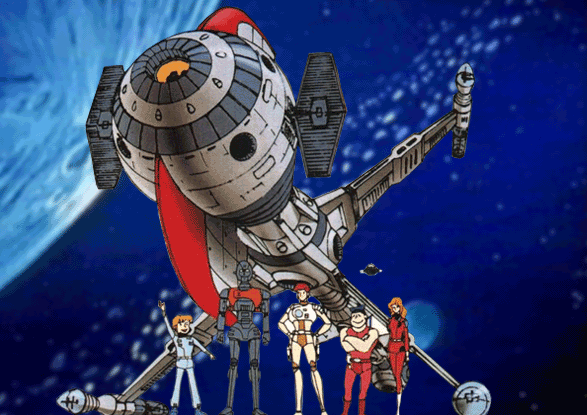
Origins
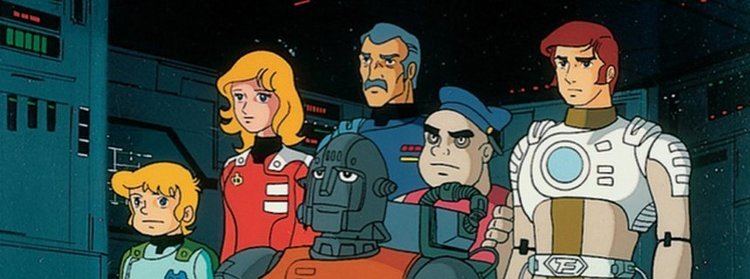
Although sometimes mistakenly attributed to science fiction writer Edmond Hamilton, who indeed authored most of the Captain Future stories, the character was created by Better Publications editor Mort Weisinger during the 1939 World Science Fiction Convention.
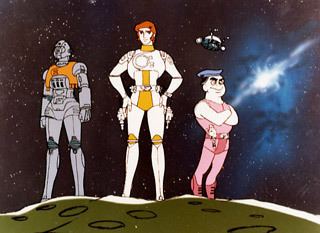
The original character was published by Ned Pines' Thrilling/Standard/Better publications company. A different Captain Future was published in Pine's Nedor Comics line.
Published stories
The stories were published in the pulp magazines from 1940 to 1951, featuring bright-colored cover illustrations by Earle K. Bergey and two other fellow pulp artists. The adventures mostly appeared in Captain Future's own magazine but later stories appeared in Startling Stories. Captain Future is Curtis Newton, a brilliant scientist and adventurer who roams the solar system solving problems, righting wrongs, and vanquishing futuristic supervillains.
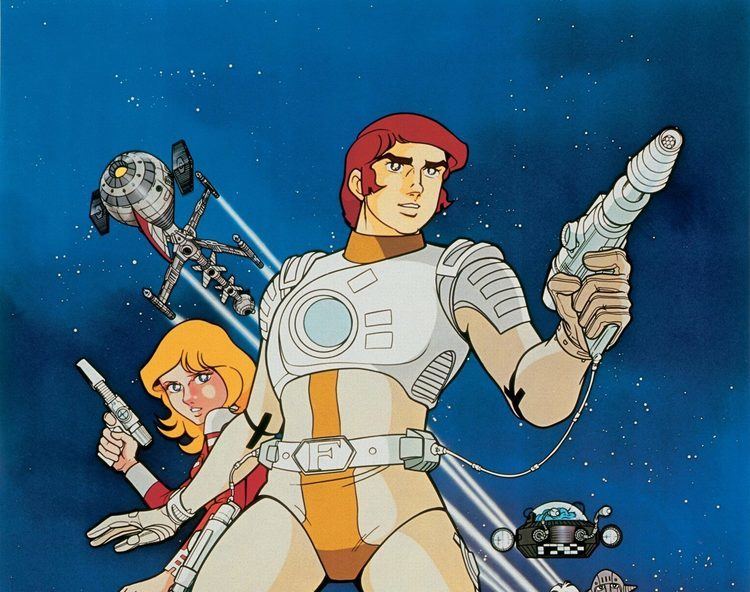
The series contains a number of assumptions about the solar system which are outlandish by modern standards but which still seemed plausible, at least to the general public, in the time the stories were written. All of the planets of the solar system, and many of the moons and asteroids, are suitable for life, and most are already occupied by humanoid extraterrestrial races. The initial adventures take place in the planets of the solar system but later stories (after the character invents the "vibration drive") take the hero to other stars, other dimensions and even the distant past and almost to the end of the Universe. For example, they visit the star Deneb, which is the origin of Earth humans, as well as many other humanoid races across the Solar System and beyond.
Plot
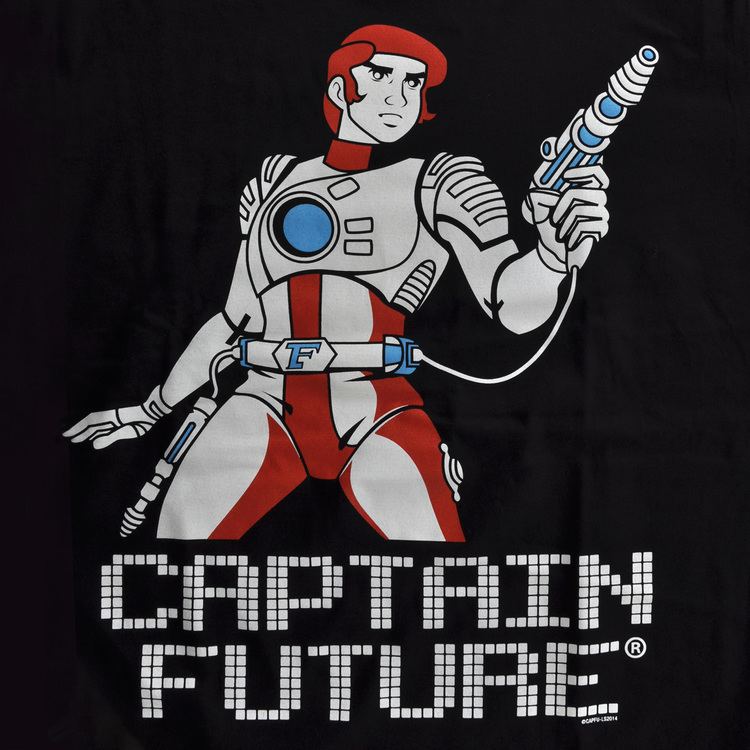
The series was originally set in 1990; as the series progressed, Hamilton quickly stopped using exact dates (except as "in the past" as in the voyages of the astronauts who first landed on most of the other planets of the Solar System), sticking with a series continuity. In later stories, if the date was asked or revealed, it was done so discreetly.
The series begins when scientist Roger Newton, his wife Elaine, and his brilliant fellow scientist Simon Wright leave planet Earth to do research in an isolated laboratory on the moon. Simon's body is old and diseased and Roger enables him to continue doing research by transplanting his healthy brain into an artificial case (originally immobile—carried around by Grag—later equipped with lifter units). Working together, the two scientists create an intelligent robot called Grag, and an android with shape-shifting abilities called Otho. The criminal scientist Victor Corvo (originally: Victor Kaslan) arrives on the moon and murders the Newtons.
The deaths of the Newtons leave their son, Curtis, to be raised by the unlikely trio of Otho, Grag, and Simon Wright. Under their tutelage, Curtis grows up to be a brilliant scientist and as strong and fast as any champion athlete. He also grows up with a strong sense of responsibility and hopes to use his scientific skills to help people. In the first adventure, he offers his services to the President of the System. The publicity-shy Curtis takes the alias Captain Future. Simon, Otho and Grag are referred to as the Futuremen in subsequent stories.
Other recurring characters in the series are the old space marshal Ezra Gurney, the beautiful Planet Patrol agent Joan Randall (who provides a love interest for Curtis) and James Carthew, President of the Solar System whose office is in New York City. A young boy called Ken Scott was exclusive to the anime.
Captain Future faces many enemies in his career but his archenemy is Ull Quorn, who is the only recurring villain in the series and appears in two different stories. He is part Martian—therefore called the Magician of Mars—but also the son of Victor Kaslan, who murdered the Newtons. Quorn is a scientist whose abilities rival those of Captain Future.
Stories
Captain Future, Startling Stories and Amazing Stories Magazines
Notes: Numbers #14-17 were credited to the newly created house name "Brett Sterling"; Numbers SS01-07 were short stories taking place a few years later in 'continuity'. Several issues were reprinted in paperback in the 60s, as noted above (one had a Frank Frazetta cover, several had Jeff Jones art, and several reprinted covers from the German SF series Perry Rhodan [including the Doctor Cyclops reprint book]). With Popular pulps, Winter was the first season/quarter of the year (Winter, Spring, Summer, Fall). All stories have now been reprinted as ebooks in a number of formats.
Characters
Anime
In 1978, one year after Hamilton's death, Toei Animation of Japan produced a Captain Future (キャプテン・フューチャー, Kyaputen Fyūchā) anime TV series of 53 episodes, based on 13 original Hamilton stories. Despite the differences in cultural references and medium, the animated series was true to the original in many ways, from the didactic scientific explanations to the emphasis on the usefulness of brains as opposed to brawn.
The series was translated in several languages and distributed globally. The four episodes comprising the series' second story arc were dubbed into English and released on video by ZIV International in the early 1980s as The Adventures of Captain Future. In the late 1980s, Harmony Gold dubbed the series' initial four-part story as an edited "TV movie" simply entitled Captain Future, but with alterations regarding some character names (different from those in Hamilton's stories - whether for licensing law or other reasons, remains a broad field for speculation). A Blu-ray Box in Japanese only was released in September, 2016 (Box 1) and November, 2016 (Box 2). A German "Limited Collectors Edition" BluRay Box was released in December 2016, featuring not only the remastered Japanese uncut version (with German subtitles) but also the heavily-cut German version.
While only eight episodes in total were dubbed into English, the series met huge success particularly in France, where the title and lead character's name were changed to "Capitaine Flam", in Italy with the translated title of "Capitan Futuro", in Latin America and Spain with the title "Capitán Futuro", in Taiwan with the title "太空突擊隊" ("Space Commando"). The Arabic-language version has the title of فارس الفضاء (Faris al-Fadha'a, or "The Knight of Space") and was broadcast many times during the 1980s.
The series was also broadcast in Germany, where it appeared under its original title. However, this version was cut by about a quarter of the original length, which mainly affected violent scenes or those considered "expendable" for the storylines.
The original incidental music was composed by Yuji Ohno, while the English-dubbed version had a new soundtrack composed by Mark Mercury. Mercury's work survived on the Latin American version, but a new opening was added for it, composed by Shuki Levy and sung by Chilean performer Juan Guillermo Aguirre (aka "Capitán Memo").
For the German version, a completely new soundtrack was created by German composer Christian Bruhn. To this day, the soundtrack is considered cult for giving the series the right feeling, and not only the theme song is still used as background music in many magazines and other shows. A soundtrack CD was released in 1995, and a remix called "The Final" by Phil Fuldner entered the top ten of the German and Swiss single charts in 1998. The German publisher Bastei-Verlag released a Captain Future comic series with original adventures.
"The Death of Captain Future"
The The Death of Captain Future is a novella by Allen Steele about a man named Bo McKinnon who collects "ancient pulp magazines" and acts out an elaborate fantasy life based on the Captain Future stories. It won the 1996 Hugo Award for Best Novella. In the story, as in the real world, Captain Future is a fictional pulp character.
Feature film
In March 2010, it was announced that German Director Christian Alvart (Pandorum, Case 39) secured the film rights for Captain Future and is working on a live-action adaptation in 3D.
In 2015, a short trailer of a CGI version of Captain Future by Prophecy FX was leaked. The trailer was said to be a study for a yet-undisclosed project. In March 2016, Chris Alvart confirmed in an interview with RocketBeanTV to have acquired the design rights from Toei Animation so that the movie will have the look and feel of the animated series.
Other appearances
The Japanese TV series Captain Ultra, a placeholder series between two actual Ultraman series, was more or less a live-action adaptation of the Captain Future series (which has remained popular in Japan as well). The characters were all present, even if the names were changed.
In the TV series The Big Bang Theory, a Captain Future magazine cover is featured as a wall poster beside the entrance door in Leonard's and Sheldon's apartment.
Also, in Cat Planet Cuties, Episode 9 features a well known song from the anime television series of Captain Future. The Cat Planet Cuties series is now being dubbed to English.
